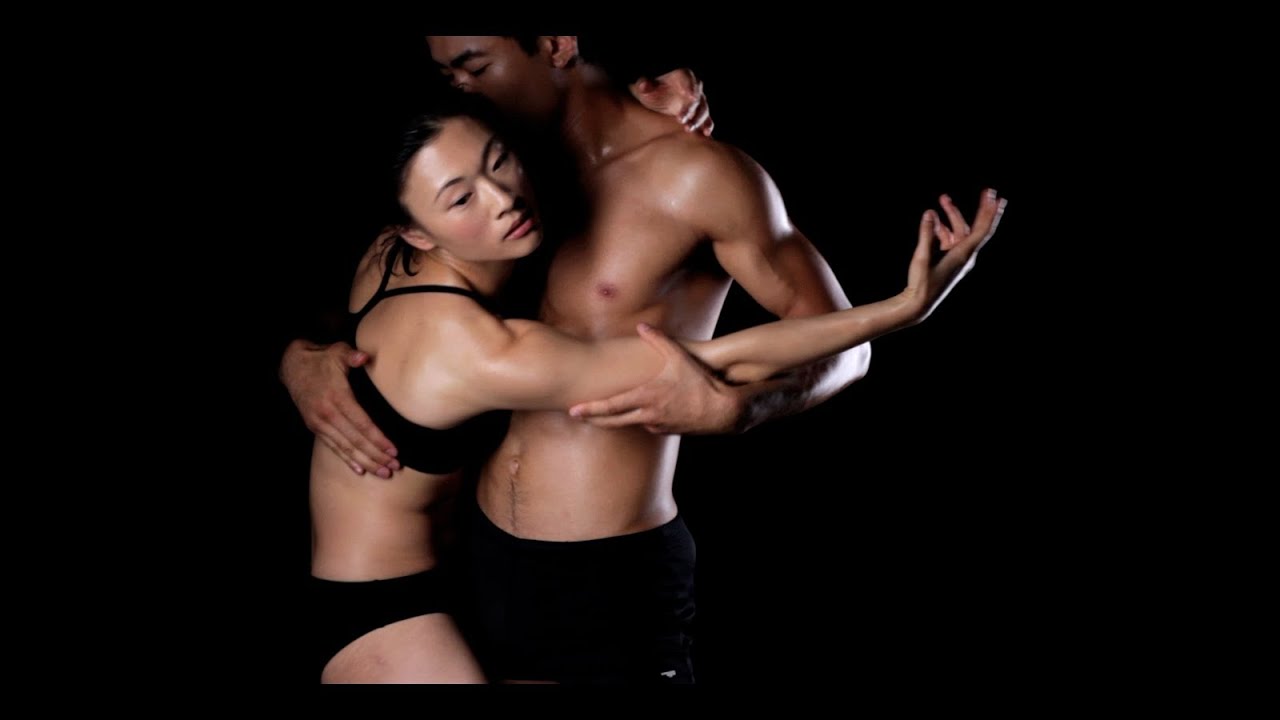On her debut album Movement, California-based composer and sound artist Holly Herndon boldly addresses human relationships with modern technology. Our lives are becoming ever more intimately linked with the digital world and the internet, thanks to the increasing prevalence and affordability of smartphones, laptops and social networking. By aggressively digitally processing her voice – mumbles, half-spoken lyrics, song, and on album highlight ‘Breathe’, gasps and sighs – Herndon’s music reflects the ambiguous nature of our interactions with these technologies. It’s by turns sensual, blissful and disturbing, and often hints towards all three states at once: her pixellated wheezes and moans during ‘Breathe’, for example, could be interpreted equally as expressions of pleasure or pain. The album’s two club-leaning tracks (the supremely wonky acid of the title track, and its most conventionally structured moment ‘Fade’), meanwhile, find a tantalising middle ground between forbidding electronic noise and sumptuous, exploratory forms of techno pop. Movement‘s sound certainly has its forebears and contemporaries – it’s possible to detect traces of everyone from Coil and Aphex Twin to Ellen Allien and Laurel Halo in the mix – but equally it contains elements, both sonic and thematic, that are quite unlike any other electronic music currently out there.
Herndon’s interests are the result of a personal history steeped in club culture and experimental music. She currently lives in San Francisco, but formerly spent several years living in Berlin, absorbed within the city’s dance music scene. Afterwards, she moved to California to study for a Masters in Electronic Music & Recording Media at Mills College, where she became increasingly engaged with exploring the possibilities of laptop performance. Now studying for a PhD at Stanford University, she programs many of her own electronic instruments and patches using coding software such as Max/MSP, and has applied these skills to a wide variety of projects, including collaborations with Iranian writer/philosopher Reza Negarestani, Chicago footwork producer Jlin and cosmic house/noise artist Hieroglyphic Being.
Moving to Mills was, Herndon explains, a crucial step in the development of her musical interests, steering her towards the possibilities of working with a laptop for composition. “Just seeing people take the laptop seriously as a concert instrument, in the academy, was really powerful for me,” she recalls. “I was taking contrabass lessons in Berlin because I thought I had to learn to play an orchestral instrument to be a serious composer, which was just insane, I was just terrible at it! I took lessons from this Russian guy and I had to take two separate trains, it was a nightmare to get the bass there… He was an amazing player but he would just tell me how awful I was all the time. It was so unpleasant, I was just like ‘Why am I doing this to myself?’”
So had you previously encountered prejudice against the idea of just working with a laptop?
Holly Herndon: Yeah, I mean, I think somehow that was just my own ignorance and my own immaturity. But when I was living in Berlin I was really involved in the club scene for a while, and then I kind of dipped out for a minute and wanted to get into new music, and started taking some Masters courses in vocal improvisation, and started getting more into the improv world. It seemed to me that… I don’t know, that was just my own twisted understanding of what serious music was, I don’t know if it was necessarily imposed by anyone, although I do think the European academic system can be a bit more old school on those terms. I definitely think that Stanford and California, when it comes to attitudes towards technology, has had a profound shaping of my attitude as well.
You’re as near as you can be to Silicon Valley and the places where it all kicked off in the first place. You’re almost in the nucleus.
HH: Right! And I mean computer music has been going on here for a long time, it’s not that alien to folks here, at the academy.
What was the actual process of learning to code to make music like? Did it require a big cognitive shift in your way of thinking about making music, compared to playing an acoustic instrument?
HH: Yeah, my learning curve was actually very steep at Mills, but the environment there was incredibly supportive and conducive even for beginners. When I look back on my first performance using Max, it’s pretty cringeworthy, but you know, we persisted. I take lessons once a week as well, just like you’d take [any other] lessons, but it’s not like a lesson where you’re performing, it’s more a lesson where I’m working on a performance system or building a particular system. I think as with anything there’s obviously a learning curve, but you can do really interesting things with really simple code, and that’s when it gets really interesting – when you have a lot of young people empowered to create their own simple systems or complex systems and make something out of it.
And some really interesting technological developments are happening that are making it more accessible, things like Codecademy, which is online coding classes, or also just as simple as Ableton Live releasing Max for Live. I think that’s massive, I use that myself. Just for people to be able to open up a reverb and see how it’s built is huge, instead of just using it as a plug-in. Your more curious types are going to get in there and start rewiring things, and I think that’s really exciting.
Did coding and working with laptops make you start becoming interested in exploring ideas of human embodiment in digital music? Or had you been thinking about these themes before you started working specifically with a laptop and programming?
HH: I think it all came out of the same period. I’m not sure what necessarily the exact impetus was, but it definitely came about when I was at Mills. That’s what I wrote my Masters thesis on, embodied electronic music performance. It was a conversation that was in the ether that people were bringing up a lot, and people felt very passionately about the topic there. I wanted to have my own take on it, and the voice was a pretty obvious choice for me – not only because I have so much experience with it, having been deeply involved with choir for my whole life, but it was just this obvious – almost too obvious – way of bringing the human body into this conversation. Because it’s not abstracted at that point.
You can tell it’s a person behind the sheen of electronics.
HH: Exactly. So that’s why I started working with it, and I wrote a piece there for my thesis that was for vocal ensemble and processing. That’s something I really want to pick up and do some more of, now that I have some resources to do that kind of thing. I would love to write for a large-scale choir with processing, that’s something that I want to do in the next couple of years.
There’s a video online of you doing a piece with a vocal ensemble, is the one you’re referring to?
HH: Yeah, ‘195’, a piece I did for the Masters concert. That was a lot of fun, that was the very beginnings of me starting to work with this stuff. So when I look back on it I still think that some of the writing is very interesting, but a lot of the use of electronics comes across to me as a little underdeveloped. So I would love to take that piece and rework it and extend it.
It’s interesting with an ensemble – you get to this point where you’re starting to blur the lines between the identities of the different performers. That must be a really interesting aspect of it. If you’ve got five people singing but you’re processing them all, you can meld them together or change individual characteristics.
HH: Yeah you can, and you can expand them. There’s a part [in that piece] where the two sopranos are whispering a little bit, and in the concert hall I thought it was pretty effective, because you can barely see them speaking into the microphone, but you could hear someone whispering behind you. Because it’s a concert hall you automatically assume it’s someone behind you talking or being rude. So there was this moment when people in the audience were turning around and giving the people behind them an evil look [laughs] before they figured out that it was the vocalists. So that’s making the vocalists superhuman, the vocalist is whispering behind your ear in a way that obviously can’t physically happen. I’m really interested in that kind of stuff too, that portion kind of reminds me of the collaboration [I did] with Reza Negarestani and Matt Dryhurst.
I was asked to be part of a festival around the theme of ‘dark ecology’, and I thought Reza would be the perfect person to collaborate on that topic with. So we Skyped about it and he basically came up with this idea of ‘taking the mundanity of life to its psychotic extreme’. What he meant by that was making people hyper-aware of their being part of the performance and being complicit with all of the objects around them. The way we did that was to build things into the composition that drew attention to peoples’ position in the audience. So I actually had my phone onstage and I was calling people in the audience so their phones were going off, I was also sampling phones and using those in a rhythmic way, there were fake glasses breaking… Then the a-ha moment at the end, I get up and everybody’s clapping in the way that they do after someone finishes, and then I’m recording their clapping and I come back and I play it back to them and process it. And the audience is completely terrified to start clapping after that!
It’s an interesting idea. One thing that’s not necessarily done enough by electronic music performers is to find ways of incorporating the audience or involving them. Those don’t often seem to be explored outside the realms of what you might call ‘academic music’.
HH: Absolutely. I hear people complain about people checking their phones in clubs or doing performances, so why not make the phone a part of the performance? Everyone’s walking around with really powerful computers in their pockets – that’s something I’d like to be able to harness. I think that does happen in academia, and it can often happen in a way that’s inaccessible and doesn’t appeal to people outside of academia, so I’m definitely interested in exploring those possibilities more.
It’s finding ways of making it playful, isn’t it? To make it accessible in a way that isn’t just about impressing people with how skillfully you use the technology. It’s more like, I’m impressed by how creatively this drew me in to what you’re doing.
HH: Yeah. I kind of take this… almost mundane approach to the spectacle of technology. I don’t really create this awe or mystique. You hear the word immersive a lot, and while all of that’s really valid, I think it’s also really interesting to draw attention to the ubiquity of technology everywhere, and how normal it is, how normalised it’s become.
That turns up, again in your performances – I like the fact that you seem quite demonstrative about what you’re doing. You’re there, your laptop is there in front of you, and you can see the way that you’re singing into the mic in real time, and then the way that sound is coming out the other end. There’s a very direct link between this technology that’s right in front of you and what you’re hearing. Although it’s obvious, it’s a really good way of engaging people with what’s actually going on. Your laptop is a presence on stage, as are you, and you’re there operating at the same time. I think what puts often people off laptop performances is peoples’ sense that they’re listening to an identikit performance that will be done in exactly the same way the following night. Working with, say, the human voice, inserts an element of unpredictability or uniqueness. People are drawn to that.
HH: Yeah, I think that’s the crux of it. What makes a performance embodied or engaging is that you feel like you’re sharing the same space and time as the performer. Whether that’s a real space or a virtual space or whatever, it’s that you’re still sharing that same space and time. We often rely on gesture as a way to talk about an engaging performance, but I don’t think that’s what the issue is. I don’t think that we have any more of a romantic or emotional association with a forearm moving, like you do to move a bow, than you do for a finger moving on a mouse pad. I think it’s really more an issue of feeling that you’re sharing that same time and space, and also that something could go wrong. As you said, that each performance is different, that the performer is situated in that same time and space in the audience.
We were talking a bit about identity and how you can incorporate changing identities into music via digital technology, but one thing that hasn’t seemed to come up that much in discussions around your music is the way that the processes that you use on your voice are very effective at softening rigid boundaries of gender identity. I was wondering whether that was something you were consciously interested in – that you can play around with what are notionally quite fixed identities in the real world?
HH: Yeah, absolutely. I mean, I’m a huge fan of Donna Haraway and I was really into her Cyborg Manifesto when I was working on my thesis, and just really into this idea of imagining new paradigms. That’s what I think is really interesting about the electronically processed voice – you’re not actually bound by the physicality of your body anymore. So a woman’s singing range doesn’t necessarily need to be x Hz to x Hz, it can go just as low as a man or it can be just as aggressive. That’s really interesting, because somehow we’re still not really breaking out of those societal rules that we have: when you hear a processed female voice on the radio it’s usually reverbed and often pitchshifted up, and in a lot of hip-hop it’s kind of angelic or sexual compared to the information-driven or aggressive message that the male will put across.
I did an interview with a German radio station, and one of the people on there was reacting to me saying something similar and he was like ‘Yeah, why not take it further and combine animal sounds with human sounds?’ That’s also interesting. I was listening to a piece of software in class the other day, they were demoing this piece of software written by Perry Cook, that was basically using an FFT analysis to take the spectrum of one sound and superimpose it onto another sound, so they combined the creaky sound of a ship mast with the human voice. It sounded crazy, it sounded like the person was speaking creaky ship mast! And they combined a person with a cat meowing, which was super goofy but really sounded like a perfect combination of the two.
A lot of what we’ve been talking about so far has been positives and possibilities of incorporating the human body and digital technology. But equally there’s a lot of points on the album that sound quite unsettling – ‘Breathe’ is an amazing track but it’s also quite horrifying in a way as well, this sense that you’ve been absorbed in the mainframe and are trapped with no air. Did you have that sort of ambiguity in mind while you were composing?
HH: You know, I don’t usually move towards dystopian imagery when it comes to human/computer intimacy. It’s funny, a lot of people have interpreted ‘Breathe’ as quite claustrophobic, but I think what it’s really doing is augmenting breath itself, or augmenting a sound of life, and anxiety is a part of that. You know what I mean? So I don’t think it’s necessarily moving towards a dystopic feeling of human/computer interaction, it’s more just using technology to expand and augment human emotion, and anxiety is part of that. I try not to play up to a sense of wonder or scariness when it comes to technology, because I feel like for me it would be dishonest, and I don’t think I would be accomplishing what I’m trying to accomplish by doing that.
There’s certainly a great deal of ambiguity in it. It doesn’t lean heavily towards any one particular reading, I think what’s interesting about it is that a lot of people I’ve spoken to about it have taken different things from it. Which I guess maybe means that you’re trying to achieve what you wanted to with it.
HH: Yeah, I mean, it’s starting a dialogue and it’s making people think about that relationship. With ‘Breathe’, all it’s really doing is expanding a natural sound, the very human emotion of breathing. I guess it’s kind of like a Rorschach test at that moment – some people find it really sexual, some people find it really claustrophobic, but all of those things are in breath anyway. So if you expand a sound that has so many cultural meanings, of course you’re going to get that many different reads.
Holly Herndon’s debut album Movement is out now on RVNG Intl.




